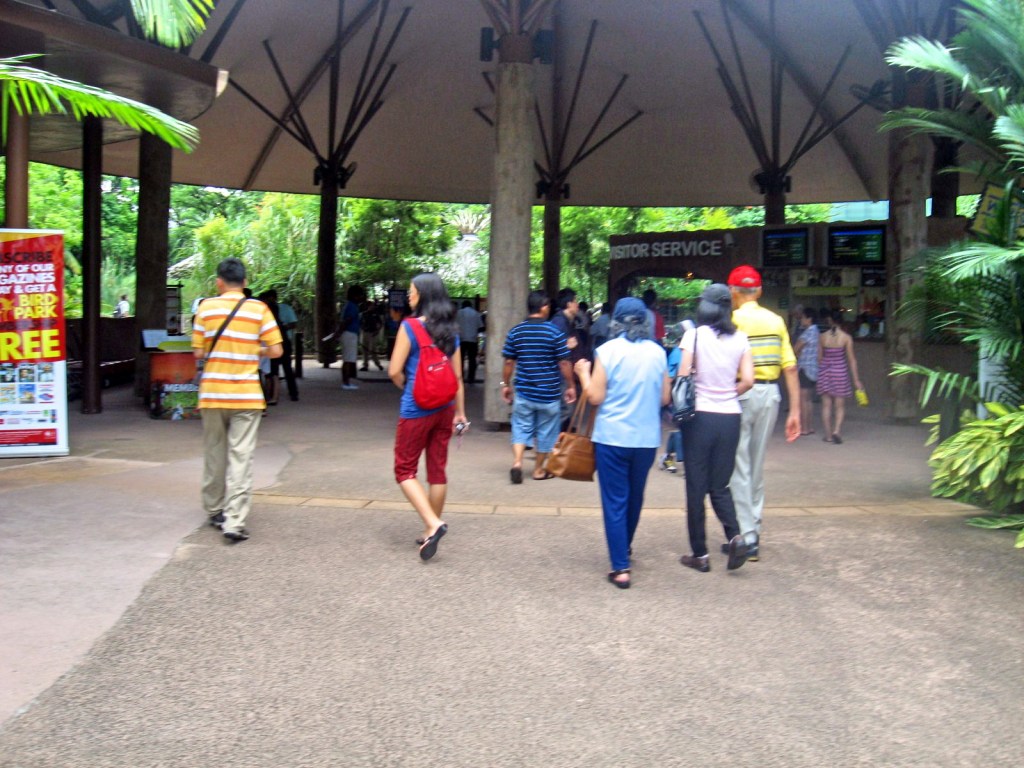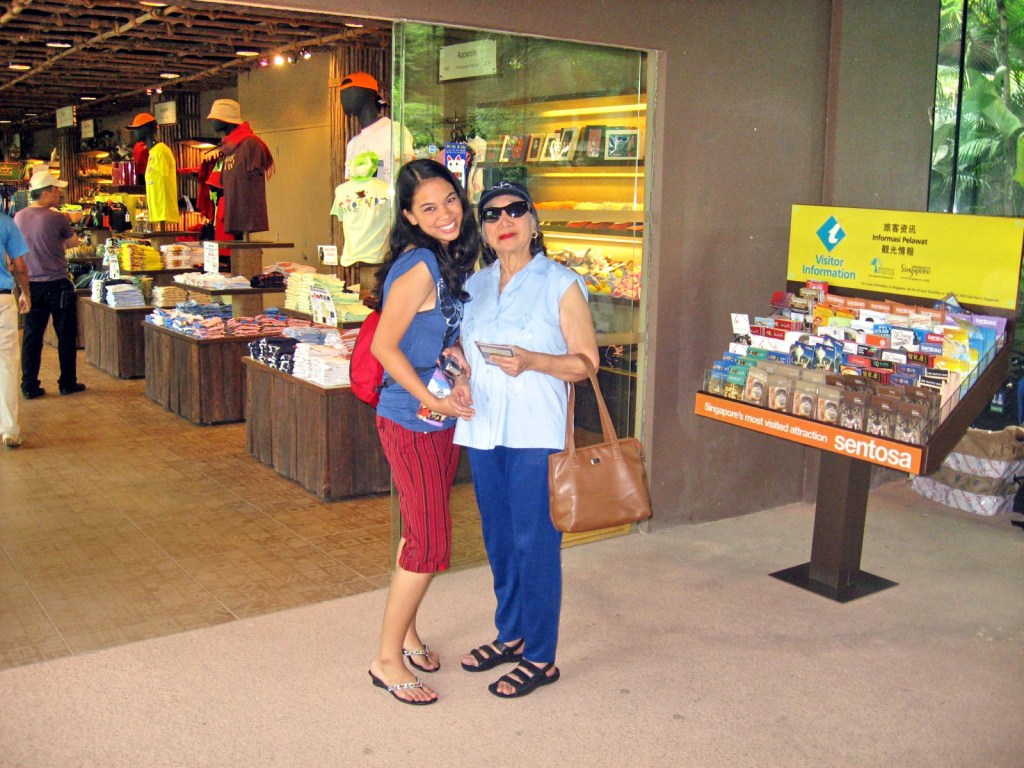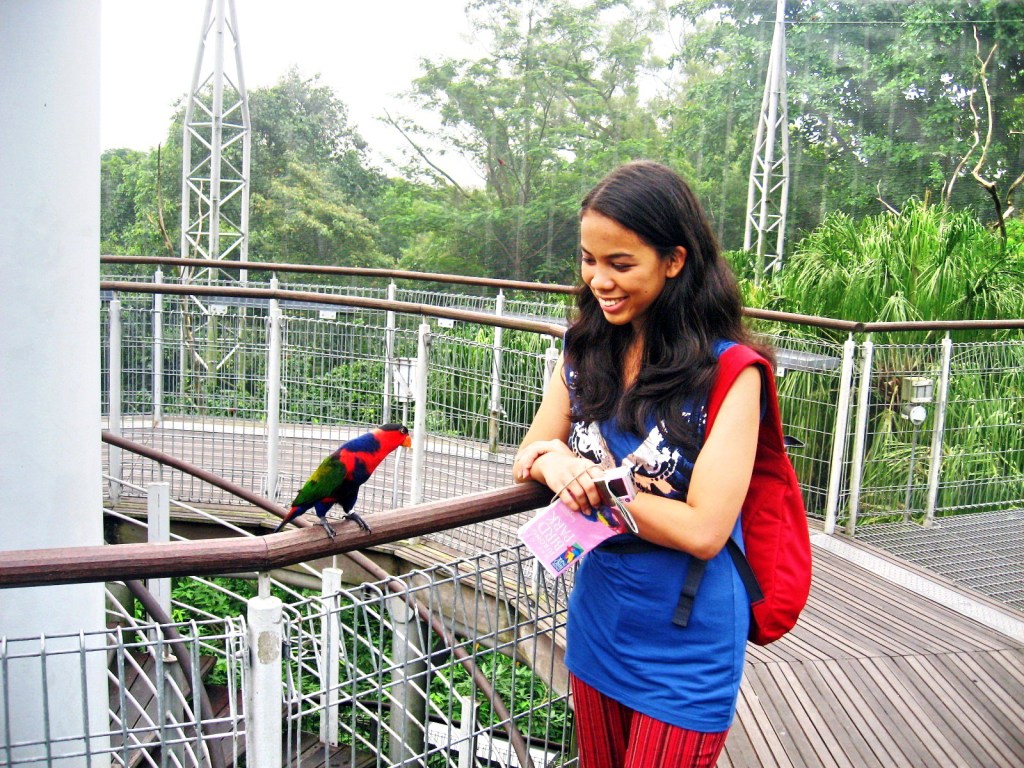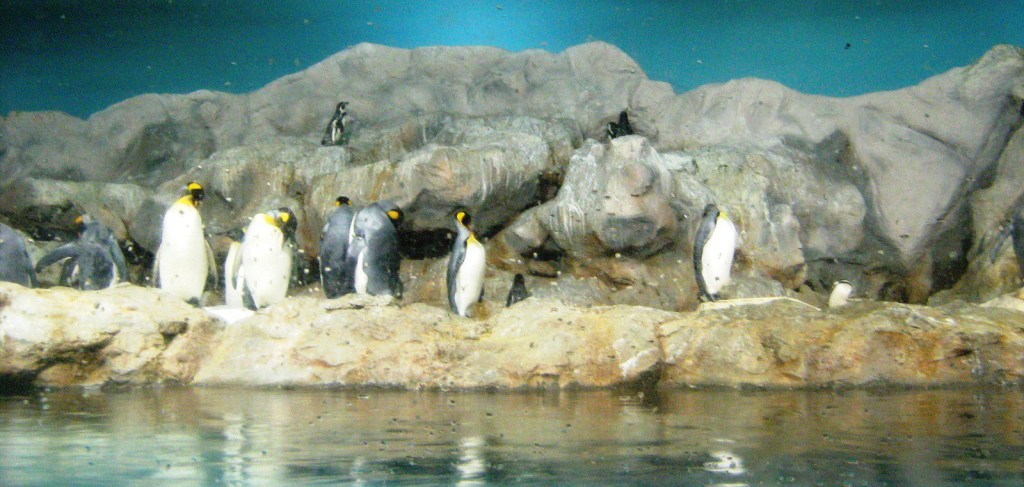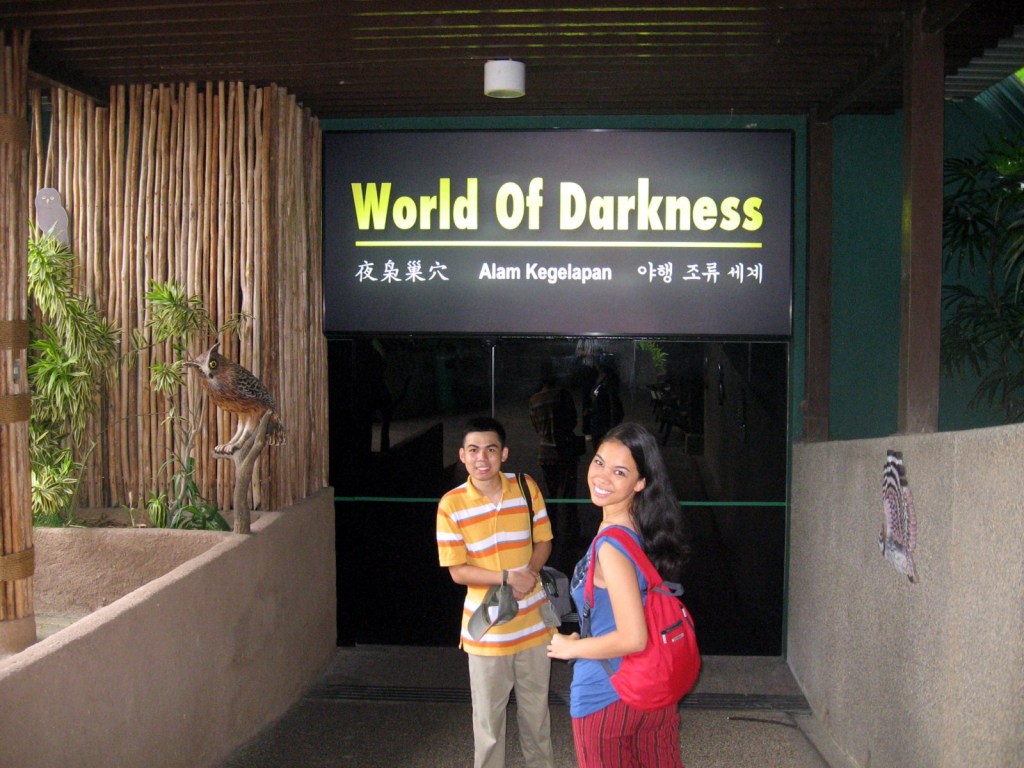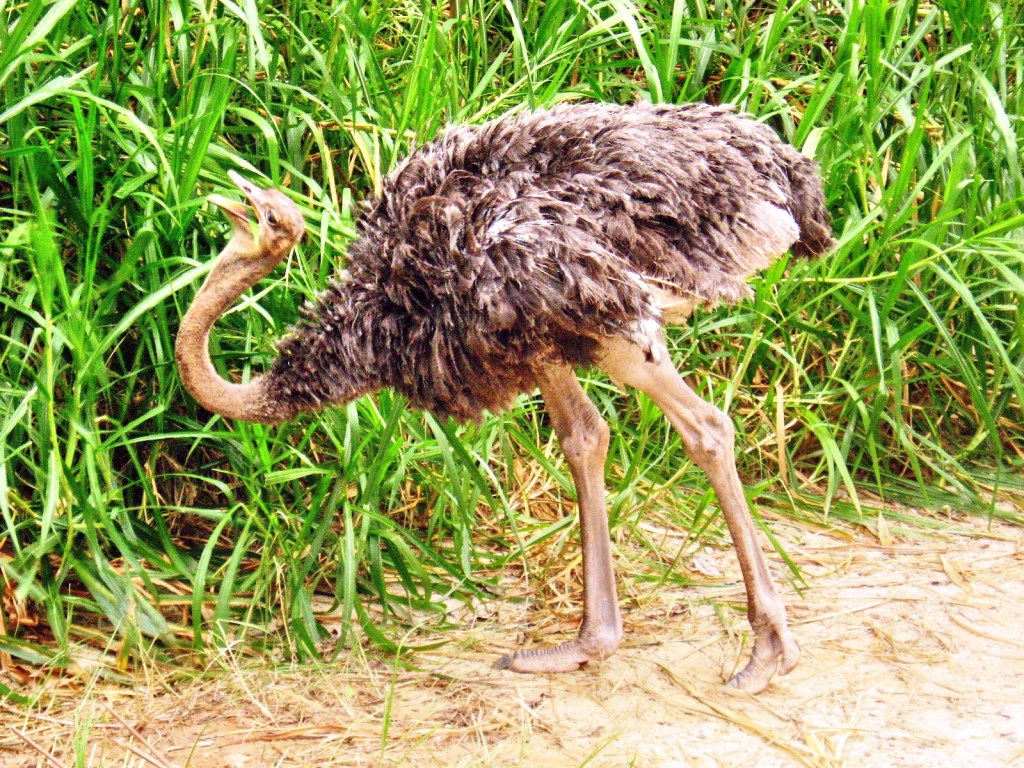We decided to spend our second day at Singapore all day at the fresh and interesting Jurong Bird Park, a first for all of us. At first glance, I did not think that a park with just birds would interest me (that’s why I didn’t go there during previous visits to Singapore), but I was to be proven wrong. Again, the park being very far from the city, we all went there (and returned) via 2 taxis, arriving there by noon after a 20-min. trip.
Managed by Wildlife Reserves Singapore, this world-famous S$3.5 million, 202,000 sq. m. (50 acre) bird zoo and landscaped park, built on the western slope of Jurong Hill, within the Boon Lay Planning Area of the Jurong District, was opened on January 3, 1971. In 2006, it completed its S$10-million makeover.
The well-maintained Jurong Bird Park, currently the world’s largest bird park in terms of number of birds and second largest in terms of land area, after Germany’s Vogelpark Walsrode, is home to an impressive collection of 4,600 exotic birds of 380 species, (29 of which are endangered) from South East Asia, Africa, South America and Australia. Some exhibits are fully open (Flamingo Lake, Swan Lake and Pelican Cove), some are cage-based (Parrot Paradise) and 4 are large walk-in aviaries.
Upon arrival, we opted to first watch the 1 PM Birds and Buddies Show (formerly called the “All Star Birdshow”) at the Pools Amphitheater. This lively and entertaining, 25-min. bird show, professionally presented with an environmental message, showcases a large number of species of performing birds, trained to such amazing levels, interacting with humans in a single act.
During the show, we were enthralled by the antics of talented birds like the mimicking cockatoos, parrots and macaws singing , playing basketball, doing stunts etc.. We liked it so much, we attended the second show at 3 PM, also at the same venue.
In between these 2 Birds and Buddies Shows,Jandy, Cheska and I climbed up a couple of flights of stairs and hopped aboard the relaxing, airconditioned Panorail (S$5), the world’s only monorail that runs through an aviary.
We dropped off at the Lory Station were we visited the 3,000 sq. m. (32,000 sq. ft.), 9 storey high Lory Loft, the world’s largest walk-in flight aviary for stunningly colorful lories and lorikeets.
Here, we walked on suspended bridges at tree top level, surrounded by over 1,000 free-flying lories. The ambiance here is said to be similar to that of a rainforest vale in tropical Northern Australia. Cheska, wanting an up close encounter, tried to offer the lories a specially concocted nectar mix in a little cup (S$3) so that the birds would flock to her.
We also visited, on foot, the 32 aviaries (housing 92 species of parrots) and the interpretative pavilion at the 1-hectare Parrot Paradise; the impressive colony of 1,001 roosting, flamboyant flamingos at the beautifully-landscaped Flamingo Lake; and Pelican Cove.
- Flamingo Lake
At Pelican Cove, we observed a cosmopolitan colony of all 7 species of pelicans, including the endangered, 11-15 kg. Dalmatian pelican (the largest of the 7), while strolling along a boardwalk. However, we failed to catch them at the world’s first underwater viewing gallery for pelicans, where the birds scoop for fish at feeding time.
Next to Pelican Cove is Swan Lake where, from an observation deck close to the water edge, we observed, at close quarters, graceful Black-necked Swan, Black Swan and the Mute Swans roosting, fishing, bathing and swimming amidst the tranquil ambiance.
- Swan Lake
Jandy and I again hopped aboard the Panorail and dropped off at the Waterfall Station where we visited the African Waterfall Aviary, the world’s largest walk-in aviary with more than 1,500 free-flying birds from over 50 species from Africa. Species here include the golden-breasted starling, turacos, bee-eaters and the hoopoe.
Here, the birds tend to stay further away and we needed to move slowly round the jungle landscaped paths to avoid spooking them. Later, we met up with Mom, Dad, Grace and Cheska at the 30 m. high Jurong Falls, the world’s tallest man-made waterfall in an aviary and a popular photo-ops.
At 4 PM, we watched the Birds of Prey Show at the Fuji Hawk Walk. Here, we watched majestic birds of prey such as eagles, hawks, vultures and falcons fly in aerial loops and soar above, moving from one treetop to another. We also learned about falconry as these birds were put through their actions in a simulated hunt. The birds sometimes swoop just 6 inches from our head.
After the show, Cheska and Jandy had a cool time having their pictures taken with a live owl, first putting on gloves so that the owl can be transferred to their hands.
After the show, we next visited the 1,600 sq. m. (17,000 sq. ft.) Penguin Coast which houses 6 species of penguins. Featuring a 21-metre (69 ft) tall Portuguese galleon facade designed to resemble a ship, the interior of Penguin Coast, a great place to escape to during a hot day and one of the few places where you can see live king penguins outside of Antarctica.
Constructed with wooden beams and flooring, Penguin Coast has 2 displays, one indoor and the other outdoor. The Humboldt, Rockhopper, Macaroni, Fairy and King Penguins live indoors in a captivating, climate-controlled den while Jackass penguins, one of the few species that are adapted to the tropics, can be viewed, with Cape Shelducks and gulls, at an outdoor penguin enclosure.
At 5 PM, we dropped by the 400 sq. m. World of Darkness, Asia’s first nocturnal bird house, opened in April 1982. It features a system of reverse lighting, converting day to night and vice versa, thereby inducing night-active creatures to come alive during the daylight hours. It is akin to a quiet nocturnal walk along a starlit jungle path, watching birds in a simulated “moonlit” night and hearing them beckon. On display are 31 birds (mostly owls) from 9 species: Black-crowned Herons, Stone Curlews, Lesser Whistling Ducks (Javan Tree Ducks), Snowy Owls, Malay Fish Owls, Eurasian Eagle Owls, Barn Owls, Great Grey Owls and the Bobook Owls.
- Royal Ramble
Next, we dropped by the 800 sq. m. Royal Ramble where we had an unobtrusive view of the world’s largest pigeons. It has a 40 m. long walkway and 3 separate aviaries housing the 3 species of Crowned Pigeons found in the world (Common Crowned Pigeon, the Victoria Crowned Pigeon and the Scheepmaker’s Crowned Pigeon).
- Dinosaur Descendants
Finally, at the 4,579 sq. ft. Dinosaurs Descendants we were greeted by a huge rock with a relief of feathers and ostrich eggs. Here, we learned the similarities and intriguing facts which link ratites (flightless birds such as ostriches and cassowaries) to dinosaurs, amidst the simulated grassland habitats of these birds.
- Dinner at Bongo Burgers
Come evening, we dined at Bongo Burgers’ delectable but quite pricey choice of pure and lean patties in generous, American-sized servings.
Jurong Bird Park: 2 Jurong Hill, Singapore 628925. Admission: S$18.00 (adults) and S$12.00 (children, 3 – 12 years). Tel: (65) 6265 0022. Fax: (65) 6261 1869. E-mail:info.jbp@wrs.com.sg. Website: www.birdpark.com.sg. Open daily, 8.30 AM-6 PM.

